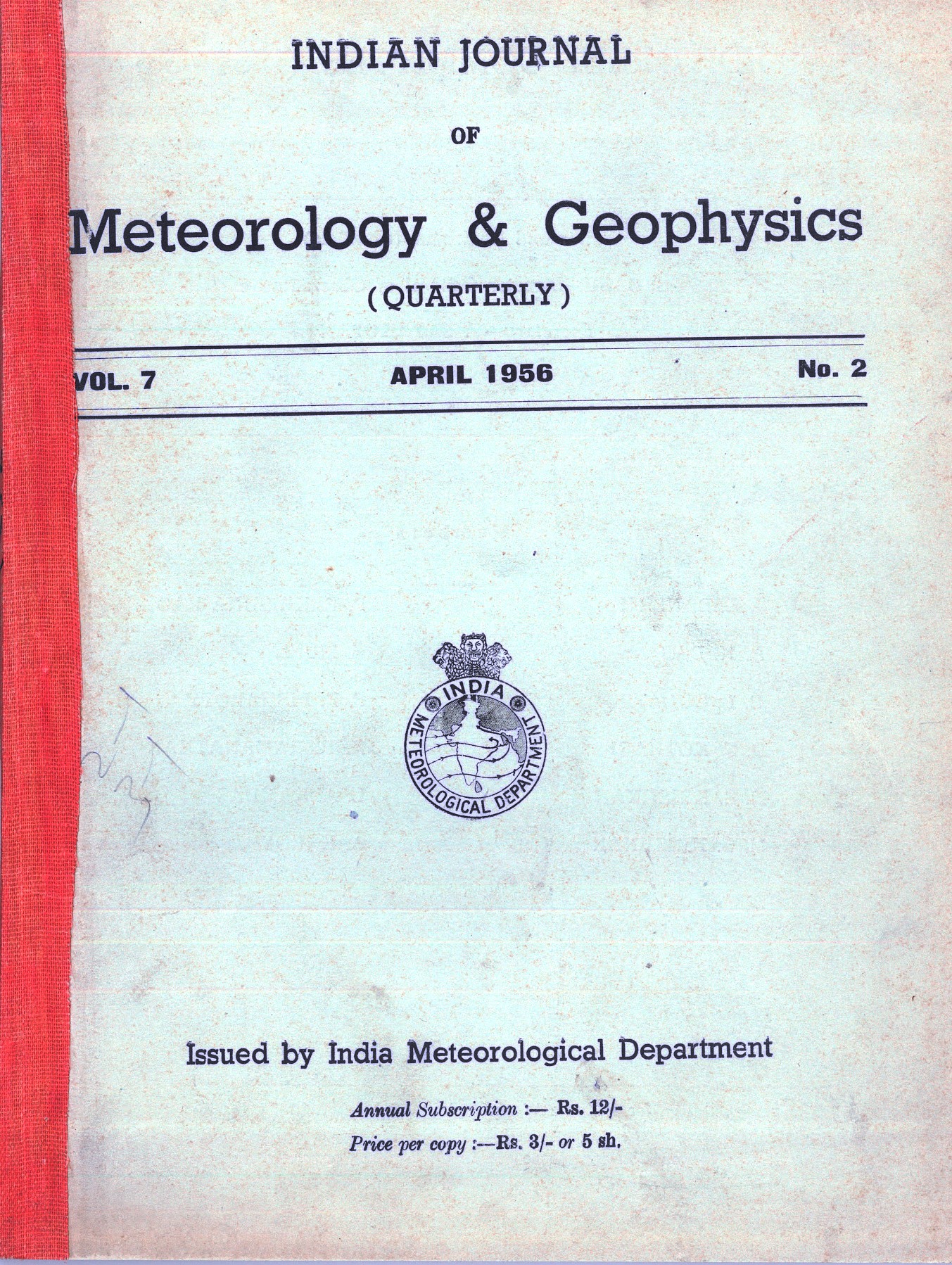Zonal wind circulation and vertical temperature distribution along the Indian longitudes during the monsoon and winter seasons
DOI:
https://doi.org/10.54302/mausam.v7i2.4524Keywords:
Winds circulation, Vertical temperature distribution, Zonal geostrophic windsAbstract
The study is based on all the available wind and temperature data, for 1944-49. Sections of geostrophic .zonal wind and temperature and of observed zonal winds have been prepared, Frequencies of strong winds (speed 70 knots or more) along the section have been worked out for the different latitudes, The chief features of the monsoon sections are-(i) Generally small latitudinal temperature variation upto 300-mb level and an appreciable variation at 2000mb and 150-mb levels in Madras-Nagpur and Nagpur-Jodhpur sectors (ii) Strong easterly winds south of 15°N at 14 km and above, The chief features of the winter sections are-(i) An appreciable latitudinal temperature gradient between Poona and Peshawar upto 400-mb level and reversal of gradient above 200-mb level as observed by others (ii) Strongest zonal (west) windne~r23°N and a secondary wind maximum apparently near 30oN and '(iii) A fairly high frequency of strong winds between 2loand 31 oN" From a consideration of the frequency of high winds a well-marked jet south of 20°N seems unlikely" A comparative study of the various mean sections indicates that during winter, jets in the northern hemisphere are found over a much wider latitudinal belt than in the southern hemisphere and during summer, the westerly jets in northern hemisphere are much weaker than those in the southern hemisphere.
Downloads
Published
How to Cite
Issue
Section
License
Copyright (c) 2021 MAUSAM

This work is licensed under a Creative Commons Attribution-NonCommercial 4.0 International License.
All articles published by MAUSAM are licensed under the Creative Commons Attribution 4.0 International License. This permits anyone.
Anyone is free:
- To Share - to copy, distribute and transmit the work
- To Remix - to adapt the work.
Under the following conditions:
- Share - copy and redistribute the material in any medium or format
- Adapt - remix, transform, and build upon the material for any purpose, even
commercially.



